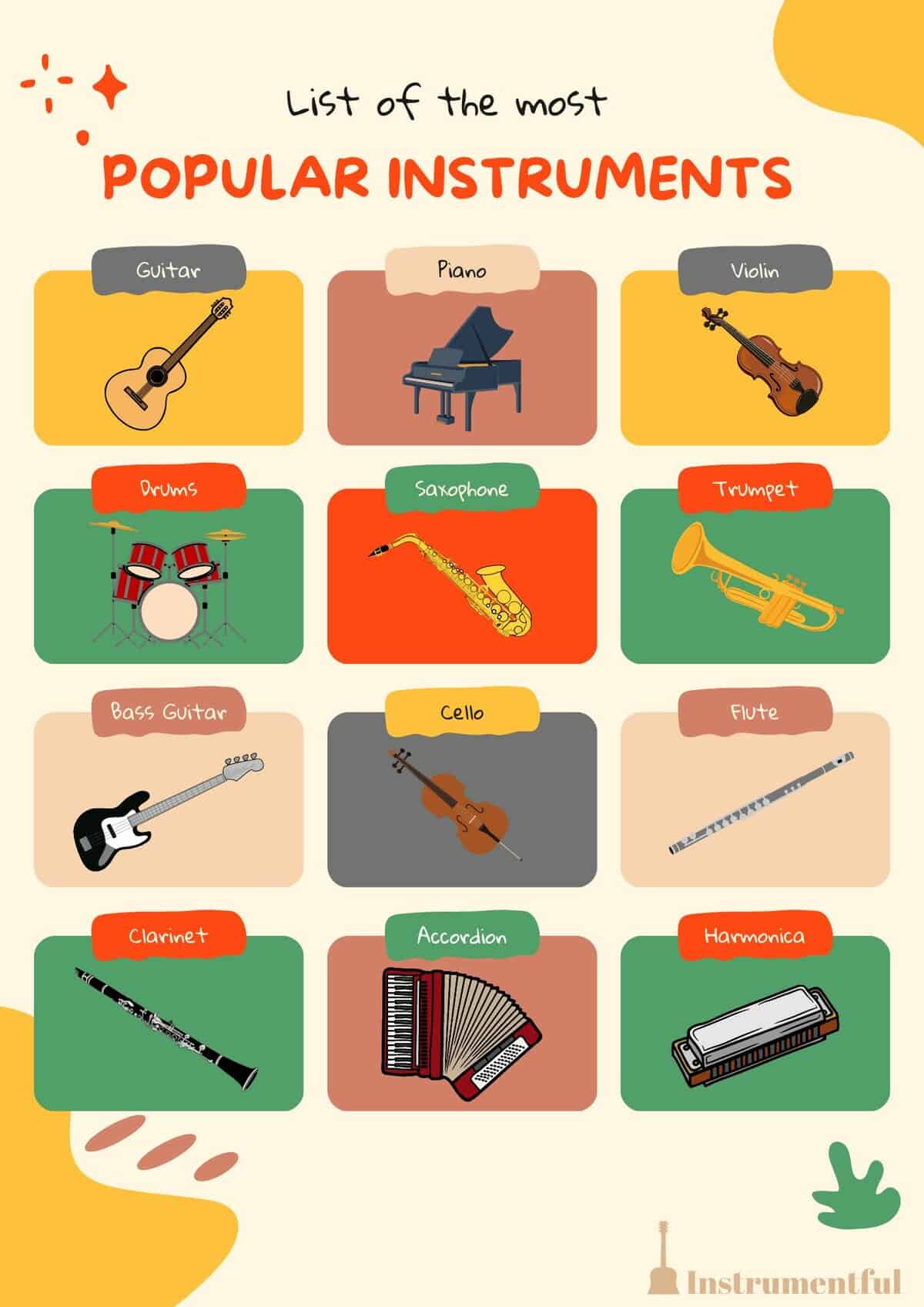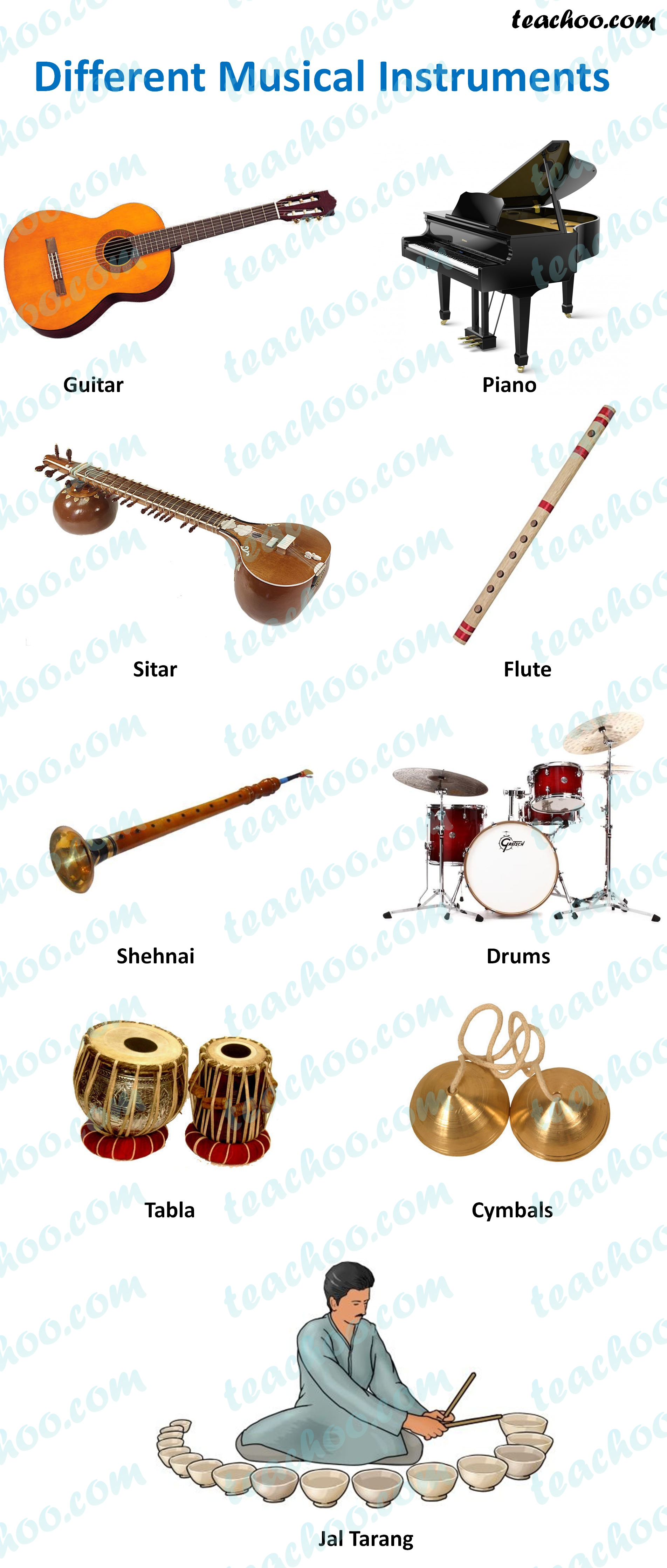There’s something magical about musical instruments. They’re not just objects; they’re storytellers, culture carriers, and emotional amplifiers. Whether you’re a seasoned musician or someone who simply loves the sound of music, understanding musical instruments is like unlocking a hidden language. In this guide, we’ll dive deep into the world of musical instruments, uncovering their history, types, and the impact they’ve had on human civilization.
Think about it for a sec—when was the last time you heard a song that didn’t involve some kind of instrument? Probably never, right? Instruments are the backbone of music, and they’ve been around for centuries. From the ancient flutes carved from bones to the modern electric guitars that rock arenas, these tools have evolved alongside humanity, shaping the way we express ourselves.
This article isn’t just about listing instruments; it’s about exploring their significance, how they work, and why they matter. So, grab your favorite drink, sit back, and let’s embark on a journey through the fascinating realm of musical instruments. Trust me, by the end of this, you’ll have a newfound appreciation for the sounds that surround us every day.
Read also:Amber Gianna Onlyfans The Rise Of A Digital Sensation
Table of Contents
- A Brief History of Musical Instruments
- Types of Musical Instruments
- Classifying Musical Instruments
- Most Popular Musical Instruments
- Learning to Play an Instrument
- Benefits of Playing Musical Instruments
- How to Maintain Your Instrument
- The Role of Technology in Musical Instruments
- Cultural Significance of Musical Instruments
- The Future of Musical Instruments
A Brief History of Musical Instruments
Let’s rewind the clock for a moment. How did musical instruments even come into existence? Well, it turns out humans have been making music since, like, forever. Archaeologists have discovered bone flutes that date back over 40,000 years, proving that even our ancient ancestors had a thing for melodies. These early instruments were pretty basic—think drums made from animal skins or flutes crafted from hollow bones—but they laid the foundation for everything we know today.
As civilizations grew, so did the complexity of instruments. The Egyptians, for example, were big fans of harps and lyres, while the Greeks rocked out with their aulos (a type of flute) and kithara (an early guitar-like instrument). Fast forward to the Renaissance, and we’ve got the birth of orchestral instruments like violins, cellos, and trumpets. Each era added its own twist, and before you know it, we’re in the 20th century with electric guitars, synthesizers, and drum machines.
Evolution of Sound
Here’s the thing: instruments didn’t just evolve in terms of design; they also changed the way we perceived sound. Imagine going from a simple bone flute to a grand piano with 88 keys. That’s some serious progress, right? The evolution of musical instruments reflects humanity’s desire to push boundaries and create new forms of expression. And honestly, it’s pretty darn cool when you think about it.
Types of Musical Instruments
Alright, let’s get into the nitty-gritty. There are tons of musical instruments out there, but they can generally be grouped into a few categories. Each type has its own unique characteristics and sounds, so let’s break it down:
- String Instruments: Think guitars, violins, and harps. These babies make sound by vibrating strings, and they’re super versatile.
- Wind Instruments: Flutes, saxophones, and trumpets fall into this category. They rely on air being blown into them to produce sound.
- Percussion Instruments: Drums, xylophones, and tambourines are part of this group. They’re all about striking, shaking, or scraping to create rhythm.
- Keyboard Instruments: Pianos, organs, and synthesizers belong here. They use keys to trigger sounds, often with a wide range of notes.
- Electronic Instruments: This is where things get futuristic. Think synthesizers, drum machines, and digital pianos. They rely on technology to generate sound.
Breaking Down the Categories
Each category has its own subcategories, too. For example, within string instruments, you’ve got bowed strings (like violins) and plucked strings (like guitars). Wind instruments can be further divided into woodwinds (like flutes) and brass (like trumpets). It’s like a whole ecosystem of sound, and each instrument plays its part.
Classifying Musical Instruments
Now, here’s where things get a bit nerdy. Musicologists use a system called the Hornbostel-Sachs classification to categorize instruments. It’s kind of like a periodic table for musical instruments, breaking them down based on how they produce sound. For example:
Read also:Monger In Asia Exploring The Rising Phenomenon
- Idiophones: Instruments that produce sound through the vibration of the material itself, like cymbals or maracas.
- Membranophones: These use a stretched membrane to create sound, like drums.
- Chordophones: String instruments fall into this category.
- Aerophones: Wind instruments belong here.
- Electrophones: This is where electronic instruments live.
It’s a bit of a mouthful, but it’s a great way to understand the science behind sound production.
Most Popular Musical Instruments
So, which instruments are the most popular these days? Well, it depends on who you ask, but here are a few that consistently rank high:
- Piano: A classic choice for beginners and pros alike. It’s versatile, expressive, and just plain awesome.
- Guitar: Whether it’s acoustic or electric, the guitar is a staple in almost every genre of music.
- Violin: Often seen as the queen of orchestral instruments, the violin has a rich, soulful sound.
- Drums: The heartbeat of any band, drums provide rhythm and energy.
- Saxophone: Jazz fans will tell you this is the king of cool. Its smooth, sultry sound is hard to resist.
Why Are These Instruments So Popular?
It’s not just about the sound; it’s also about accessibility and versatility. Instruments like the piano and guitar are relatively easy to learn, making them perfect for beginners. Plus, they can be used in almost any style of music, from classical to rock to hip-hop. It’s like they’re the Swiss Army knives of the music world.
Learning to Play an Instrument
Alright, so you’ve decided you want to pick up an instrument. Congratulations! Learning to play music is one of the most rewarding things you can do. But where do you start? Here are a few tips:
- Choose the Right Instrument: Pick something that excites you. If you love rock music, maybe start with a guitar. If you’re into classical, consider a violin or piano.
- Find a Good Teacher: A skilled instructor can make all the difference. They’ll help you master the basics and avoid bad habits.
- Practice Consistently: Even 15 minutes a day can make a huge difference. Consistency is key when it comes to learning an instrument.
- Be Patient: Learning an instrument takes time. Don’t get discouraged if you don’t sound like a pro right away. Everyone starts somewhere.
Common Challenges and How to Overcome Them
Let’s be real—learning an instrument isn’t always easy. You might struggle with finger dexterity, timing, or reading sheet music. But here’s the thing: every musician has been there. The key is to break things down into manageable steps and celebrate your progress along the way. And remember, practice makes perfect—or at least better!
Benefits of Playing Musical Instruments
Playing a musical instrument isn’t just fun; it’s also good for your brain and body. Studies have shown that musicians tend to have better memory, focus, and problem-solving skills. Plus, it’s a great stress reliever. There’s something about creating music that just feels… therapeutic. Here are a few more benefits:
- Boosts creativity
- Improves hand-eye coordination
- Enhances emotional expression
- Builds confidence
- Encourages discipline
Music and Mental Health
There’s a growing body of research linking music to improved mental health. Whether you’re playing or listening, music has a way of calming the mind and lifting the spirit. It’s like a natural mood booster, and it’s available to anyone who wants to pick up an instrument.
How to Maintain Your Instrument
Once you’ve got your hands on an instrument, it’s important to take care of it. After all, you want it to last, right? Here are a few tips for keeping your instrument in top condition:
- Store It Properly: Keep your instrument in a case when it’s not in use, and avoid exposing it to extreme temperatures or humidity.
- Clean Regularly: Use a soft cloth to wipe down your instrument after each use. For string instruments, you might need to change strings periodically.
- Check for Damage: Inspect your instrument regularly for signs of wear or damage. If you notice anything, get it repaired ASAP.
- Get It Serviced: Just like a car, instruments need regular maintenance. Take yours to a professional every now and then to ensure it’s in good shape.
DIY Maintenance Tips
If you’re handy, there are a few things you can do yourself to keep your instrument in good condition. For example, you can oil the keys on a piano, polish the brass on a trumpet, or adjust the tuning pegs on a guitar. Just be careful—some repairs are best left to the experts.
The Role of Technology in Musical Instruments
Technology has had a huge impact on the world of musical instruments. From digital pianos to virtual drum kits, there are more options than ever for musicians. Here are a few ways tech has changed the game:
- Electronic Instruments: Synthesizers and drum machines have opened up new possibilities for sound creation.
- Recording Software: Programs like GarageBand and Pro Tools allow musicians to record and edit their music from home.
- Online Lessons: Platforms like YouTube and Udemy make it easier than ever to learn an instrument online.
- Augmented Reality: Some companies are experimenting with AR to create immersive learning experiences for musicians.
The Future of Tech and Music
As technology continues to evolve, who knows what the future holds for musical instruments? We might see more AI-powered instruments, holographic performances, or even brainwave-controlled sound systems. The possibilities are endless, and it’s exciting to think about where music will go next.
Cultural Significance of Musical Instruments
Musical instruments aren’t just tools; they’re cultural artifacts. Every culture has its own unique instruments and traditions, and these play a huge role in shaping identity. For example:
- African Djembe Drums: Used in traditional ceremonies and celebrations, these drums are a symbol of community and rhythm.
- Indian Sitar: A staple of classical Indian music, the sitar has a rich, resonant sound that’s instantly recognizable.
- Mexican Mariachi Trumpets: These bright, brassy instruments are a key part of mariachi music, which is deeply tied to Mexican culture.
Music as a Universal Language
Despite our differences, music has a way of bringing people together. Whether you’re jamming on a guitar in your bedroom or attending a classical concert in Vienna,


